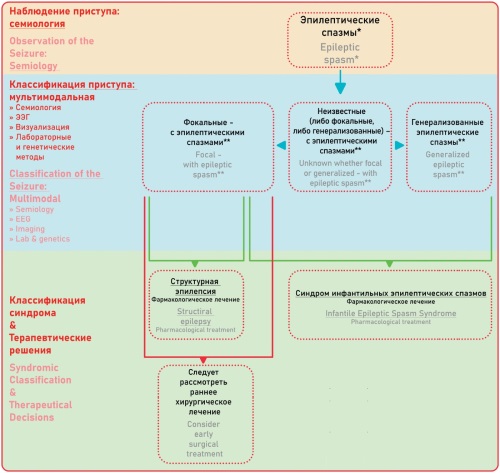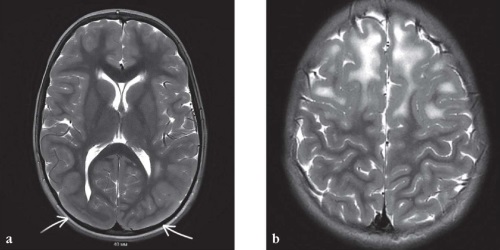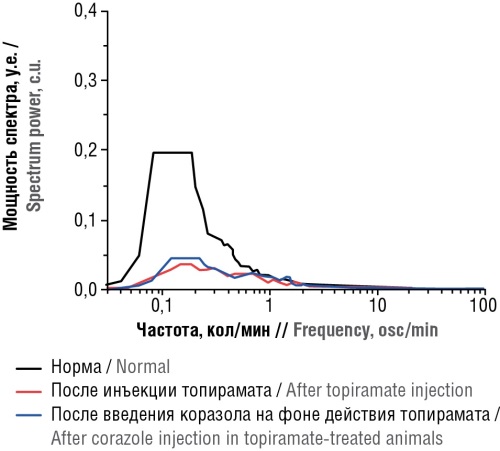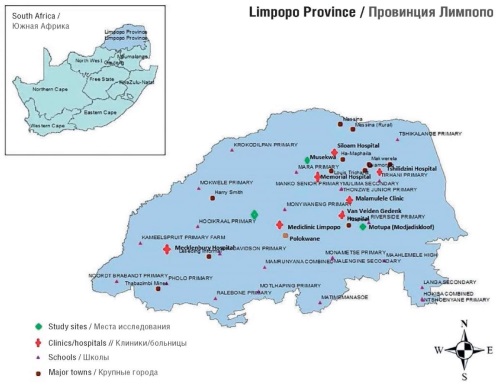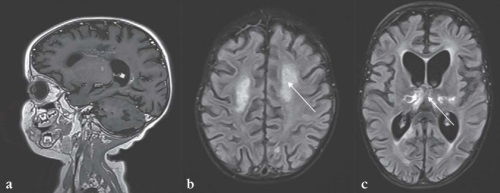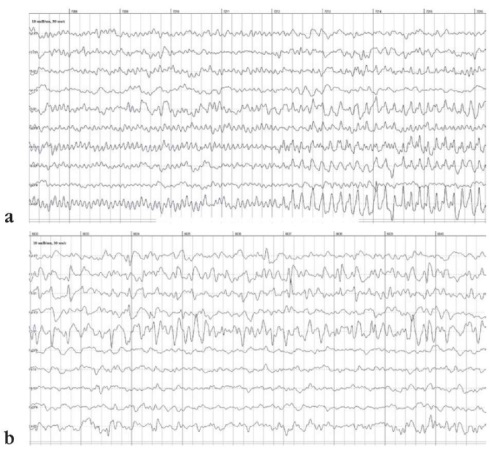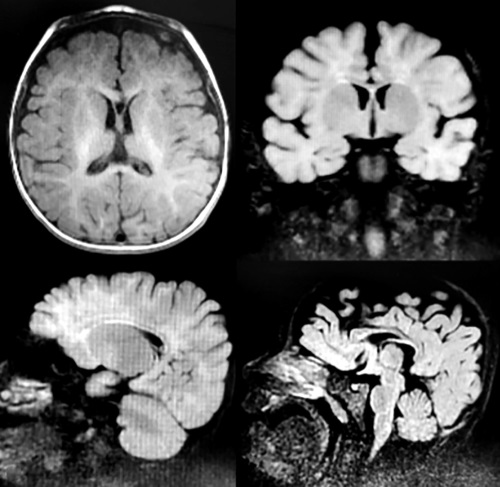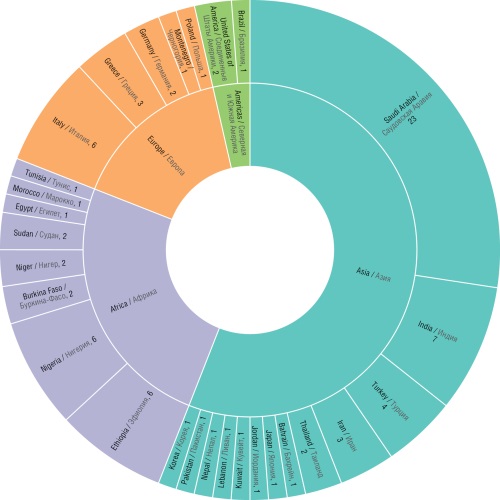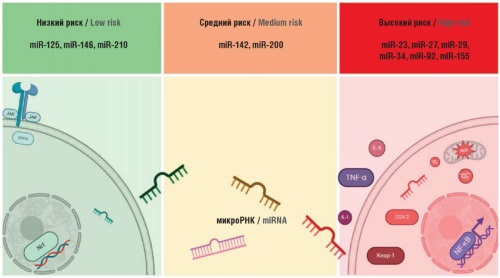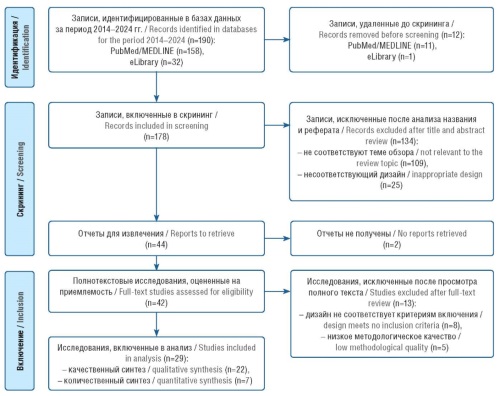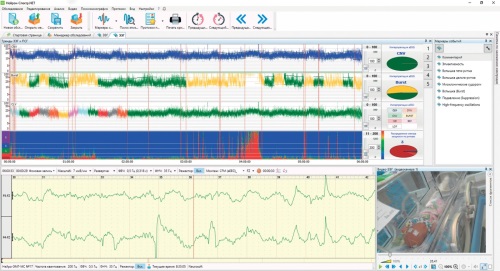EDITORIAL ARTICLES
Epilepsy is one of the most common neurological disorders, affecting 51.7 million people worldwide. The International League Against Epilepsy (ILAE) plays a pivotal role in equipping healthcare professionals, patients, government agencies and the general public with the necessary resources to enhance the diagnosis and treatment of epilepsy. In 2025, the ILAE released an updated classification of epileptic seizures, which aimed to address the limitations of previous version and adapt to modern clinical and scientific needs. This publication presents and analyses the ILAE 2025 classification of epileptic seizures, including its development methodology, key changes, and recommendations for clinical application. To develop the document, an ILAE working group was established. This involved conducting a systematic literature review to evaluate the previous version, using a modified Delphi method to reach consensus and implementing a public discussion and peer review process. The updated classification includes four main seizure classes: focal; unknown whether focal or generalized; generalized; and unclassified. Key changes, compared to the previous version include: the removal of the term “onset” from mail seizure class names; introduction of classifiers and descriptors; the term “awareness” has been replaced with “consciousness”; seizures are now described as with or without observable manifestations (basic version) or by the chronological sequence of semiology (expanded version). Epileptic negative myoclonus is recognized as a distinct seizure type. The ILAE 2025 classification of epileptic seizures is a significant step forward in standardizing the diagnosis and treatment of epilepsy, its update helps to improve the quality of medical care and further development of collaboration between epilepsy specialists around the world.
ORIGINAL ARTICLES
Background. Merosin-deficient muscular dystrophy (MDMD) is a neuromuscular disease resulting from the emergence of biallelic variants in the LAMA2 gene and manifested by progressive muscle weakness, diffuse hypotonia, impaired posture, contractures of large joints, and respiratory pathology. Epilepsy is a common symptom of MDMD. However, at the moment, the clinical course of epilepsy in MDMD remains understudied.
Objective: To determine the features of epilepsy, electroencephalographic (EEG), radiological characteristics in MDMD patients, to identify a relation between brain pathological changes and the course of epilepsy, pathology on the EEG data and the location of nucleotide sequence variants within the LAMA2 gene.
Material and methods. The study analyzed the EEG from 63 subjects with a genetically verified MDMD diagnosis. At the Veltishchev Research Clinical Institute of Pediatrics and Pediatric Surgery, an interictal EEG was carried out in 29 patients, the native data of an interictal EEG performed at the place of residence were collected and reanalyzed for 34 patients. Clinical and neurological statuses were assessed in all patients; 55 patients underwent brain magnetic resonance imaging (MRI).
Results. Epilepsy was observed in 12 of 63 (19%) patients with MDMD and was characterized by a relatively late onset – 11.5 years of age. A predominantly focal seizure pattern was noted: 7 of 12 (58.4%) patients. The percentage of pharmacoresistance was comparable to epilepsy in general and amounted to 4 of 12 (33.3%) cases. Twelve of 51 (23.5%) subjects without epileptic seizures had EEG-verified epileptiform activity. Changes in brain MRI were represented by leukopathy, which was registered in all patients aged above 1 year old, as well as bilateral occipital pachygyria in 4 of 63 (6.3%) cases. In the presented group, no statistically significant relationship between disease form, EEG changes, central nervous system pathology and the presence of nucleotide sequence variants in the LG domain was found. The lack of correlation between such parameters may be due to a relatively small number of patients examined.
Conclusion. Our study has advanced in understanding the course of epilepsy in MDMD. Given the presence of somatic complications masking epileptic seizures, it is necessary to be alert for epilepsy for timely diagnostics and care in this group of patients.
Objective: development of a simple algorithm to comparatively evaluate effectiveness of various anticonvulsant drugs (ACDs) for restraining epileptiform states in rats.
Material and methods. The experiments were conducted with 120 white male rats weighing 180–220 g. Using Bioscope hardware complex, the standard indicators of animals’ condition were assessed after injection of various ACDs and after corazole was subcutaneously administered in ACD-treated rats. For a quantitative assessment of the animals’ condition, a spectrum of the original Bioscope signals was constructed to determine interpeak intervals of the oscillatory signals, calculate 16 statistical indicators for a set of successive interpeak intervals followed by constructing their spectrum.
Results. An algorithm based on analyzed bioscopic indicators of the animals’ condition was proposed. It was shown that lamotrigine at a dose of 25 mg/kg did not restrain convulsive states after corazole administration, and its conditional effectiveness score was zero. However, after increasing the dose of lamotrigine to 70 mg/kg, its total effectiveness score reached 3. The use of topiramate at a dose of 15 mg/kg turned out to be very effective (maximal 6 points). The high efficiency of using classical drugs luminal and diazepam for restraining convulsive states (6 and 5 points, respectively) was also noted.
Conclusion. The proposed analytical methodology is functional and allows identifying ACDs that can be used most effectively to relieve body epileptiform conditions.
Background. Cultural beliefs, attitudes, and traditions play a crucial role in shaping epilepsy treatment preferences. Rather than obtaining medical interventions, most clients may prefer spiritual healing or traditional healers. This may cause delays in early diagnosis and appropriate epilepsy medical care, thereby increasing the risk of complications.
Objective: to investigate experiences of people living with epilepsy (PLWE) regarding care or interventions they receive from professional nurses, faith-based healers, and traditional healers in rural communities of Limpopo and Mpumalanga, South Africa. Material and methods. A qualitative approach using exploratory, descriptive and contextual designs was employed to attain the objectives of the study. In-depth individual interviews were conducted to collect data, and analysis was performed using Tesch’s eight steps of data analysis. The sample comprised 25 PLWE in selected rural communities.
Results. Three themes emerged from the data: experiences with care by traditional healers, experiences with care by faithbased healers, and experiences of care by professional nurses at local clinics. The findings revealed that many PLWE preferred care provided by traditional healers and faith-based healers over modern medical treatment from the local clinics, even though they were not always effective. Modern treatment was usually considered at a later stage, causing delays in diagnosis and theraphy. Treatment preferences are significantly influenced by cultural beliefs, values, and practices. Individuals with epilepsy who think their condition is spiritual in nature opt to receive treatment from traditional or faith-based healers. On the other hand, antiepileptic medications from nearby clinics are preferred by those who think there is a medical cause.
Conclusion. The results of the study demonstrated the necessity of creating culturally congruent approaches that honour the values and customs of PLWE, fostering a feeling of community and supporting the delivery of comprehensive care.
CLINICAL CASES
Pediatric encephalitis is a group of diseases characterized by brain disease, fever, seizures, cerebrospinal fluid pleocytosis and neuroradiological changes. Dedicator of cytokinesis proteins (DOCK) family proteins are of primary importance in actin cytoskeleton regulation. DOCK11 plays a crucial role in human immune diseases. In this paper, we describe a clinical case of anti-N-methyl-D-aspartate receptor encephalitis in a boy with a hemizygous variant in DOCK11 gene. DOCK11 deficiency is a new X-linked immunerelated actinopathy leading to impaired cell division cycle 42 (CDC42) activity and signal transducer and activator of transcription 5 (STAT5) activation. It is associated with abnormal actin cytoskeleton remodeling as well as regulatory T cell phenotype, culminating in immune dysregulation and severe early-onset autoimmunity.
Developmental and epileptic encephalopathy (DEE) caused by a mutation in the KCNT1 gene (KCNT1-DEE) is registered in the Online Mendelian Inheritance in Man (OMIM) catalogue inder code number 614959. Alternative names: DEE 14, early infantile epileptic encephalopathy 14. KCNT1-DEE most often manifests as a syndrome of “epilepsy in infancy with migrating focal seizures”. However, the course of epilepsies due to mutant KCNT1 gene is characterized by a broad clinical polymorphism. The article describes a child with severe KCNT1-DEE with clinical picture dominated by drug-resistant focal seizures, profound mental retardation and spastic tetraparesis, as well as microcephaly and microsomia.
The article describes three clinical cases of hereditary disorders associated with chromosomal mutations: deletions of chromosomes 14 and 18. These observations are of professional and scientific interest, since they relate to rare neurological pathology. The rarity of this anomaly, the presence of complications, the high cost of invasive diagnostics, the variability of the phenotype, including severe congenital malformations in children with microdeletions lead together to underdiagnosis of patients at the stage of prenatal diagnostics, which entails difficulties in selecting effective and safe therapy, a need for medical and psychosocial rehabilitation of children in society. In case of refractory epilepsy with developmental delay in infancy, typical to chromosomal microdeletions, genetic counseling and examination should be carried out to search for chromosomal pathology. Increasing the awareness of doctors about this disorder will contribute to its timely diagnostics and treatment.
SCIENTIFIC SURVEYS
Background. Schoolteachers and pupils constitute a tremendous force of potential rescuers who may promptly respond to seizure episodes in school settings and beyond. It is important to understand their awareness and readiness towards providing first aid for seizures. A scoping review was conducted to map related evidence from international studies.
Objective: To identify and summarise current research on real-life experiences, attitudes and knowledge of schoolteachers and school pupils regarding first aid for seizures.
Material and methods. The search and selection of sources from PubMed/MEDLINE and Google Scholar databases was carried out in accordance with the PRISMA recommendations. All records were evaluated based on their title and abstract. After clearing from duplicates, full texts were assessed for eligibility. Bibliographies of eligible papers were hand-searched for additional relevant publications.
Results. A total of 84 survey studies conducted in 28 countries were included. Based on the collective research data, the median percentages of teachers and pupils who ever witnessed a seizure were 57.5 and 57.1, respectively. About 27.7% of teachers were bystanders to a seizure incident in a child at school. Among teachers, 22.2% attempted first aid for seizures in real life but only 9.2% received first-aid training. A large proportion of teachers and pupils considered applying measures that may cause harm to a person with seizures.
Conclusion. Schoolteachers’ and pupils’ unpreparedness to give first aid for seizures constitutes a global health concern that demands coordinated international and country-level efforts aiming at the wide implementation of high-quality education on first aid for epileptic seizures at schools.
Background. Metabolic syndrome induced by antiepileptic drugs (AED-MetS) is a serious adverse reaction (AR) that reduces the quality of life of patients with epilepsy and increases the risk of comorbid cardiovascular disorders affecting life expectancy. The risk of developing AED-MetS varies depending on various factors that account for a search for sensitive and specific biomarkers to predict its development, prevention, diagnosis and correction as well as related main domains (hypertension, dyslipidemia, central obesity, type 2 diabetes mellitus). Systemic inflammatory response and oxidative stress are important arms in both epileptogenesis and neurodegeneration, as well as AED-MetS pathogenesis.
Objective: Systematization of the results from preclinical and clinical studies on the role of circulating blood microRNAs in the development and adverse course of the systemic inflammatory response as one of AED-MetS main domains in patients with epilepsy.
Material and methods. The analysis of the results of fundamental and clinical studies on circulating microRNAs as epigenetic biomarkers of systemic inflammatory reactions in the mechanism of MetS and AED-MetS pathogenesis, which were included in the databases Google Scholar, PubMed/MEDLINE, MDPI, Scopus, and eLibrary, was carried out over the last decade (2014– 2024).
Results. A systematic review has demonstrated that microRNAs can act as promising epigenetic biomarkers of AED-MetS, however, the role for different microRNAs and their paralogs on the development of this AR varies. As part of the current study, a microRNA signature was proposed depending on the risk and severity of the systemic inflammatory response and associated oxidative stress (the leading mechanisms of AED-MetS pathogenesis). The proposed signature consists of three groups of microRNAs, depending on their role in regulating the systemic inflammatory response: low, medium, and high risk.
Conclusion. The role of microRNAs in regulating the systemic inflammatory response in AED-MetS requires to be further investigated and results of basic research translated into real-world clinical practice, since the studied microRNAs can not only trigger and exacerbate AED-MetS, but also initiate or support the neurodegenerative processes underlying epileptogenesis.
Background. Post-traumatic epilepsy (PTE) in children is a significant medical and social problem affecting the quality of patients’ life. The periods of early and late convulsive seizures (CS) with a distinct pathophysiological basis are distinguished in the development of the disease. Pharmacoresistance formed due to structurally determined epileptogenic zones in PTE creates prerequisites for increasing the frequency of surgical interventions as the only effective treatment method to achieve seizure freedom.
Objective: To analyze literature data on predictors of PTE development in children, efficacy of conservative and surgical treatment. Material and methods. In accordance with the PRISMA approach, 29 foreign and Russian publications found in PubMed/ MEDLINE and eLibrary databases and published between 2014 and 2024 were selected for the review, including 7 systematic reviews and meta-analyses. The selection criterion was the relevance of the publication topic to the search query “posttraumatic epilepsy in children”.
Results. According to current concepts, there are four research areas assessing potential risks of PTE development in moderate and severe traumatic brain injury among children: biomarkers, genetic predisposition, neuroimaging and neurophysiological predictors. No justified therapeutic option for preventing early СS is available, while some studies have reported the efficacy of prophylactically used antiepileptic drugs to control incidence of late CS in the pediatric PTE population. PTE as a structural form of epilepsy has a high potential for the use of surgical therapies to achieve seizure freedom.
Conclusion. The data analysis demonstrates the expansion of the clinical diagnostic approach in identifying risk factors for PTE in children, as well as shapes the understanding of the feasibility and efficacy of conservative and surgical treatments.
Background. Phantom, or phantom limb (PL), or phantom amputee is a false sensation of the presence of a lost body part, a multifaceted and to date not fully investigated phenomenon that occurs after amputation of a body part. Up to 98–99% of amputated patients experience sensations in the lost body part soon after the operation: they feel warmth or cold, itching, pressure and even the position of the phantom limb in space. The most frequent painful PL form – phantom pain (PP), or phantom pain syndrome, occurs in 29–85.6% of patients. However, apart from the painful PL/PP form, phantom sensations (PS) as a more rarely described painless form of PL exists. Objective: To review publications describing the clinical picture, course of painless PL form – PS, compare PS with PP, and determine their relationship.
Material and methods. We analyzed literature sources aimed at describing painless PL available in the databases PubMed/ MEDLINE, Scopus, Google Scholar, OpenAlex, eLibrary, CyberLeninka as well as located in the Russian State Library and the State Central Scientific Medical Library. The search was conducted using the following keywords: “phantom limb sensation”, “non-painful phantom”, “painless phantom”, “natural phantom”, “telescoping phenomenon” in Russian and English.
Results. The prevalence of PS reported in the studies ranged from 32.4% to 90% among all amputees. The sensations of one amputee were shown to completely differ from those of another subject, obviously being related to individual reactivity. A comparative analysis of PS and PP was carried out, their similarities and differences were determined, and relevant relationships detailed; it was revealed that the division into PS and PP is conditional and both phenomena can alternate in one patient. Comparing PS with PP allowed to establish that PS magnitude and brightness can directly correlate with PP severity, with both clinical forms able to mutually transform. Physical and socio-psychological factors have been identified to be associated with PP. The relationship between loss and loss denial as well as underlying psychopathology in PS or PP development was shown.
Conclusion. Painless PL is not often described in the literature; therefore, gaining new knowledge on this topic and understanding by doctors regarding diversity of sensations after amputation may be useful both for informing patients about potential painful and painless course of postamputation period and for timely identification of pathological course behind natural painless PL, which may evidence about deep psychotization of amputee's personality.
EEG РRACTICAL AND TECHNICAL ASPECTS
With the advent of computer electroencephalographs, mathematical methods for EEG processing began to actively develop, some of which have found their application in current clinical practice, others – in brain-computer systems, some algorithms are used only in scientific research, whereas the remaining have shown inefficiency and become undemanded. Here, a fairly new approach to the mathematical processing of EEG signals is overviewed that allows not only to diagnose brain functional state, but also to predict the treatment outcomes in critically ill patients in intensive care units. Particularly, ABCD microstates will be discussed.
OBITUARY

This work is licensed under a Creative Commons Attribution-NonCommercial-ShareAlike 4.0 International License.
ISSN 2311-4088 (Online)



